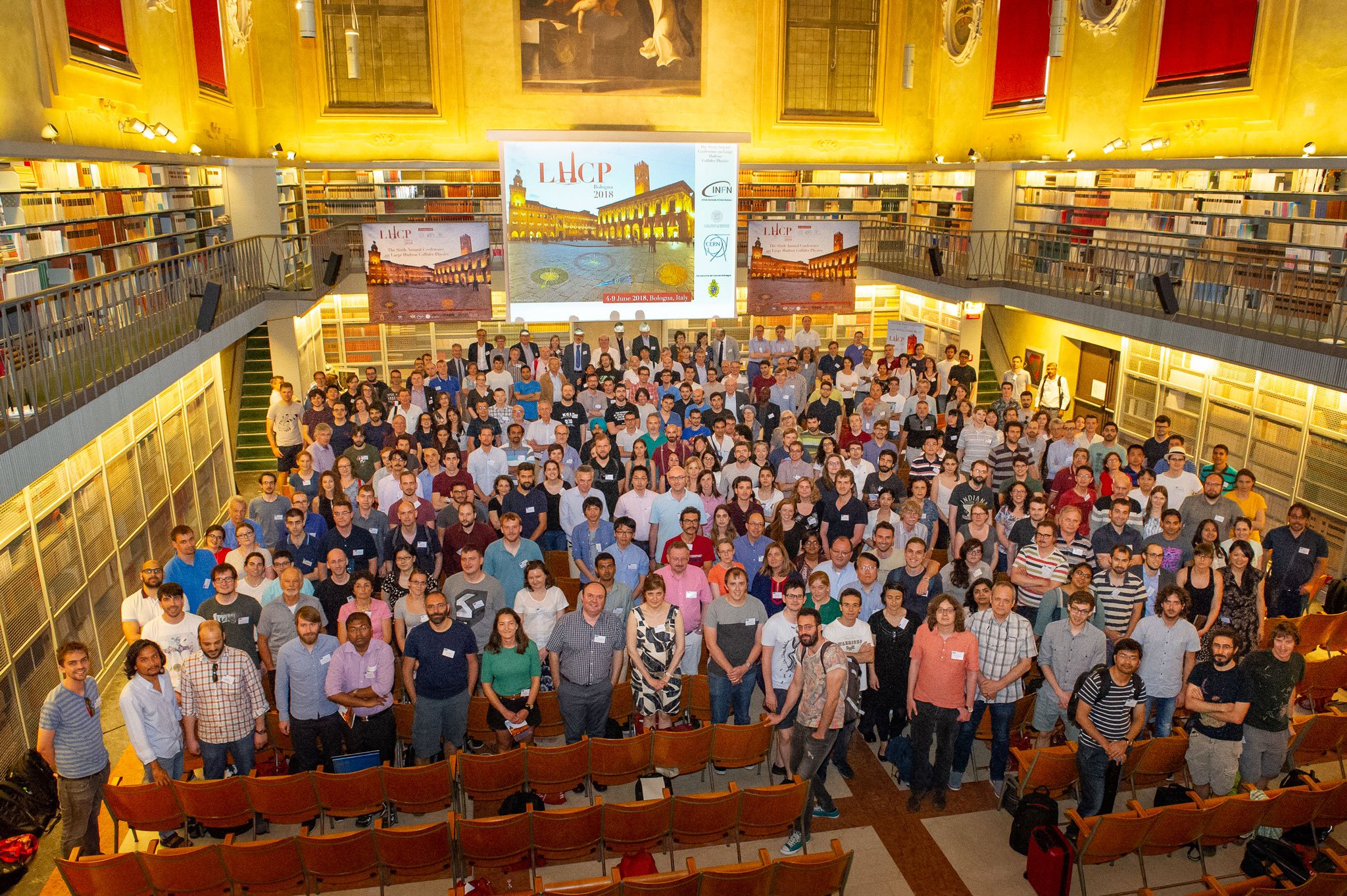Some 450 researchers from around the world headed to historic Bologna, Italy, on 4–9 June to attend the sixth Large Hadron Collider Physics (LHCP) conference. The many talks demonstrated the breadth of the LHC physics programme, as the collider’s experiments dig deep into the high-energy 13 TeV dataset and look ahead to opportunities following the high-luminosity LHC upgrade.
Both ATLAS and CMS have now detected the Higgs boson’s direct Yukawa coupling to the top quark, following earlier analyses, and the results are in agreement with the prediction from the Standard Model (SM). Further results on Higgs interactions included the determination by ATLAS of its coupling of the tau lepton with high significance, which agrees well with the previous observation by CMS. Measuring the coupling between the Higgs boson and the other SM particles is a key element of the LHC physics programme, with bottom quarks now in the collaborations’ sights.
The Bologna event also saw news on the spectroscopy front. CMS reported that it has resolved for the first time the J=1 and J=2 states of the Xib(3P) particle, using 13 TeV data corresponding to an integrated luminosity of 80 fb-1. The measured mass difference between the two states, 10.60 ± 0.64 (stat) ± 0.17 (syst) MeV, is consistent with most theoretical calculations. Meanwhile, the LHCb collaboration reported the measurement of the lifetime of the doubly charmed baryon Xicc++ discovered by the collaboration last year, obtaining a value of 0.256+0.024-0.022 (stat) ±0.014 (syst) ps, which is within the predicted SM range.
The Cabibbo-Kobayashi-Maskawa (CKM) matrix, which quantifies the couplings between quarks of different flavour and possible charge-parity (CP) violation in the quark system, was another focus of the conference. LHCb presented a new measurement of the angle gamma, which is the least well measured of the three angles defining the CKM unitary triangle and is associated with the up–bottom quark matrix element. The collaboration obtained a value of 74° with an uncertainty of about 5°, making it the most precise measurement of gamma from a single experiment.
Nuclei–nuclei collisions also shone, with the ALICE collaboration showcasing measurements of the charged-particle multiplicity density, nuclear modification factor and anisotropic flow in Xe–Xe collisons at an energy of 5.44 TeV per nucleon. These and other nuclei–nuclei measurements are providing a deeper insight into extreme states of matter such as the quark–gluon plasma.
Searches for physics beyond the SM by the LHC experiments so far continue to come up empty-handed, slicing into the allowed parameter space of many theoretical models such as those involving dark matter. However, as was also emphasised at this years’ LHCP, there are many possible models and the range of parameters they span is large, requiring researchers to deploy “full ingenuity” in searching for new physics.
These are just a few of the many highlights of this year’s LHCP, which also included updates on the experiments’ planned upgrades for the High-Luminosity LHC and perspectives on physics opportunities at future colliders. Last but not least, the conference also saw a public event by several eminent speakers including CERN Director-General Fabiola Gianotti being given to a packed audience.
For more information about the ATLAS and CMS results, check out the ATLAS and CMS websites.

